Locked & loaded | Fischer RC4 ski boots
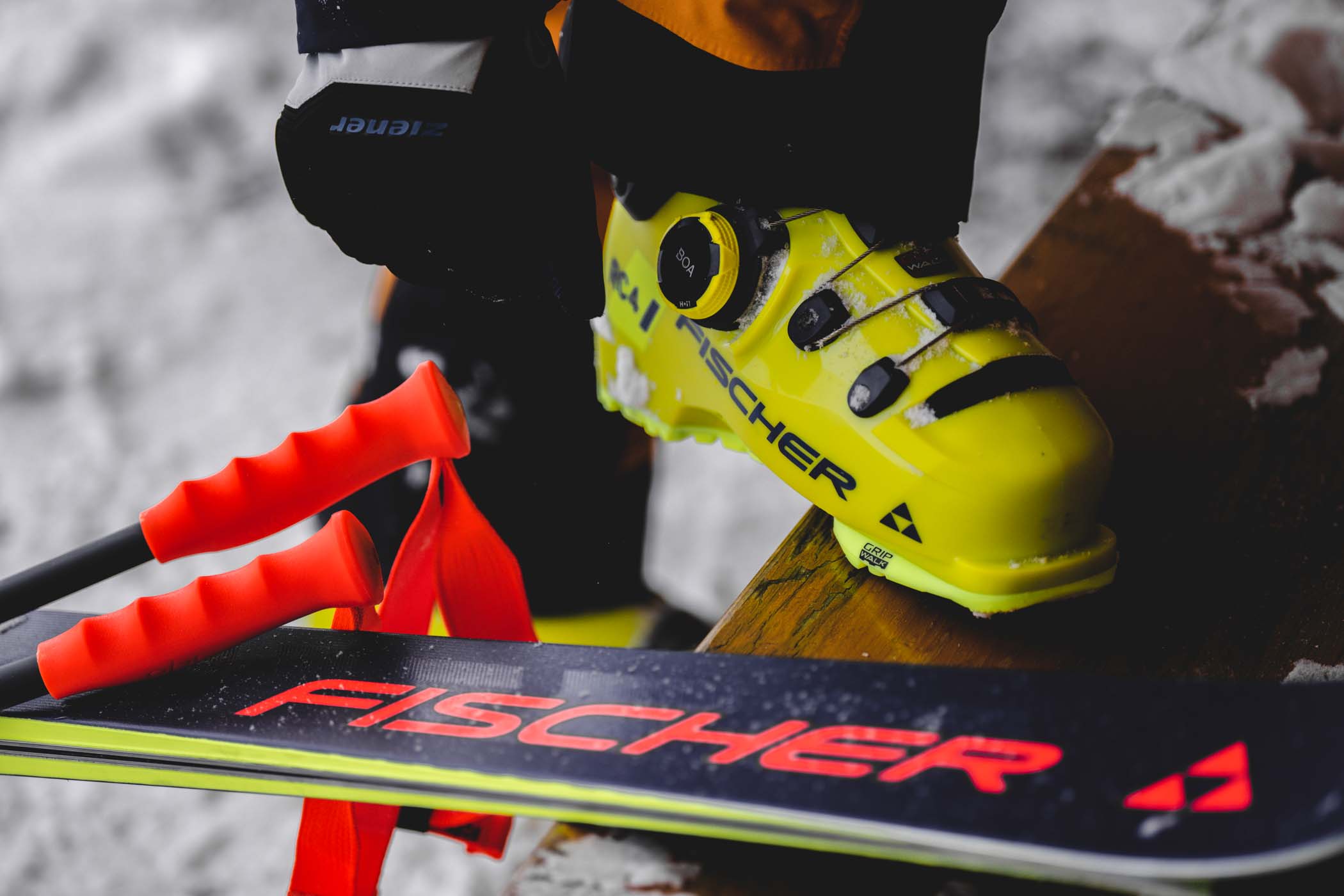

Al Morgan: You come from a racing background and look after the alpine boots at Fischer. How did you get into the role?
Christoph Lentz: I grew up in Park City (PC), Utah, and am the oldest son of a Bavarian mountain girl and a Los Angeles beach-nerd. I figuratively grew up on skis, and by 1st grade was an active member of both the PC alpine and the PC nordic combined ski teams.
I had to make a choice, so committed 100% to alpine racing – the right decision, as ski jumping honestly scared the sh*t out of me.
In 2010, I switched to Fischer skis, drawn by the reputation of the slalom equipment. All my coaches and boot fitters insisted I not race in the Fischer boot, but instead in the tried-and-true Lange. I struggled to adapt to a ZB/ZC combo boot (note for readers: Lange uses a Z grading system for race ski boot flexes) for one season until, by lucky coincidence, Chris, the local race rep, set me up with a Fischer boot.
Despite protests from my coaches, in March 2011 I won my first FIS slalom race in a yellow VACUUM Fit boot with SOMA TEC. This opened my eyes to the power of brand reputation and the conservative mindset in the industry; and got me working as a ‘shop kid’ for the Fischer race test centre up at Mt. Hood, Oregon, for the subsequent four summers, getting my first hands-on experience fitting boots.
Fast forward through four years as a student-athlete and four years working as a data-scientist, I decided (via a ¼ life crisis) to get back to my passion for skiing.
I wanted to explore my Bavarian roots (and in no small part my native German skills and inherited passport). Helped by historical race ties to Fischer, I was in the right place at the right time and found my dream job in my current role.
Since moving to the Salzburg region of Austria in 2019, I’ve been immersed in all forms of uphill and downhill adventures, as well as discovering the centre of the ski boot universe: Montebelluna, Italy.
Fischer VACUUM has been around for a couple of decades. You’ve mentioned how this helped your ski racing days. How does this benefit skiers who aren’t into racing, and what innovations make the boots so special?
Fischer VACUUM is an interesting story, relevant to the evolution story of Fischer alpine boots. The Fischer SOMA F9000, our first boot, was launched in 2004. Due to the inherent challenges in scaling from a single model to a full range, the clever engineers at Fischer developed a proprietary polymer designed to maximise the adjustability of the boots.
With limited tooling, and only one relatively narrow last shape, we needed shells that could easily be adapted to fit as many feet as possible, so Fischer VACUUM Fit was born.
This plastic compound has a ‘memory effect’, so it holds its new shape without reverting back to how it came out of the mould. Also, the temperature required to custom-mould the plastic is low, so at only 80°C the plastic can be quickly reshaped. Once cooled, it will hold this shape much more effectively than with traditional polymers (i.e. TPUs, but especially PPs and PAs*).
This was the primary goal, but the engineers also tested and observed additional important benefits of the new VACUUM material. It’s more than 10% lighter than TPU, is more thermostable, so has an enhanced consistency of flex from -10°C to+10°C, and it delivers a livelier flex with smoother suspension.
Nearly 20 years later, Fischer VACUUM Fit shells remain a key Fischer USP, with all the same benefits, even though the first-fit of our boots has got better. In terms of other innovation in Fischer boots, all new concepts contain Fischer’s SOMA TEC stance technology, providing power, grip and control through the tuned alignment of the sole lugs respective to foot position.
Also, all new Fischer boots, including the RC4 MV, are built referencing FISCHER Scan-Fit data to ensure optimal anatomic fit based on real feet of Fischer customers.
In terms of technical features, new highlights include the alpine BOA Fit System, RC4 ZipFit inner boots, and CARBONFUSED cuffs.
*Some other brands require temperatures well over 110°C. TPU is thermoplastic polyurethane, PP is polypropylenes and PA is polyamide.
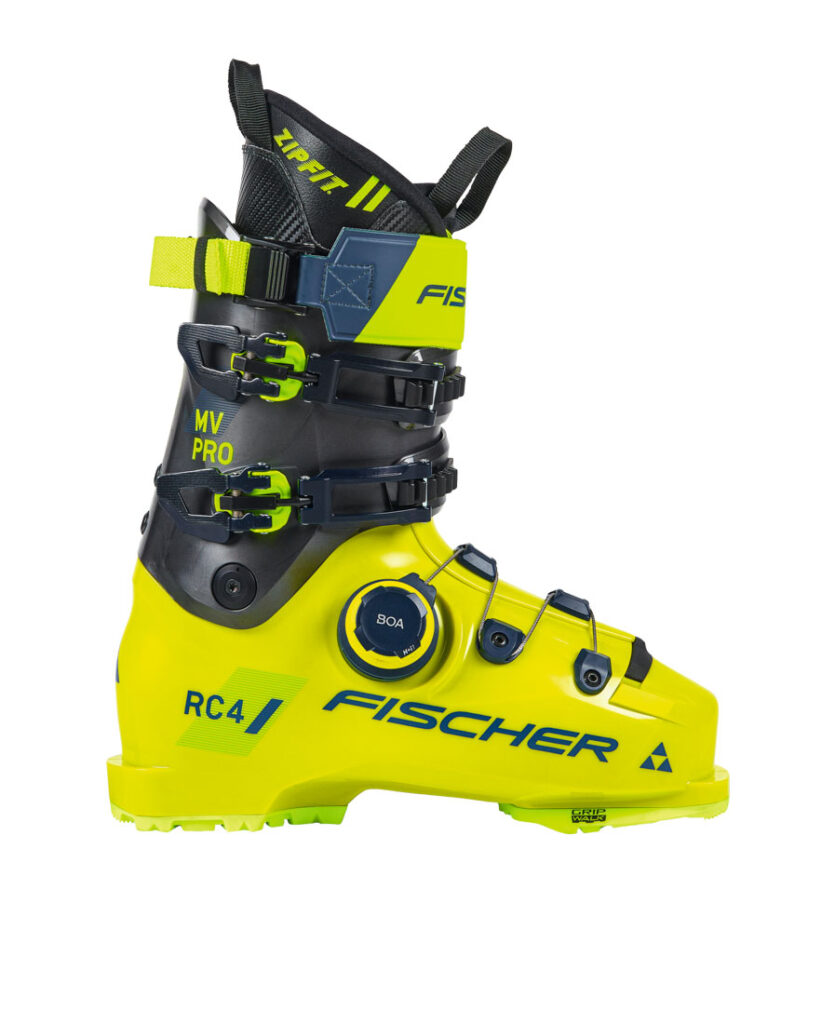
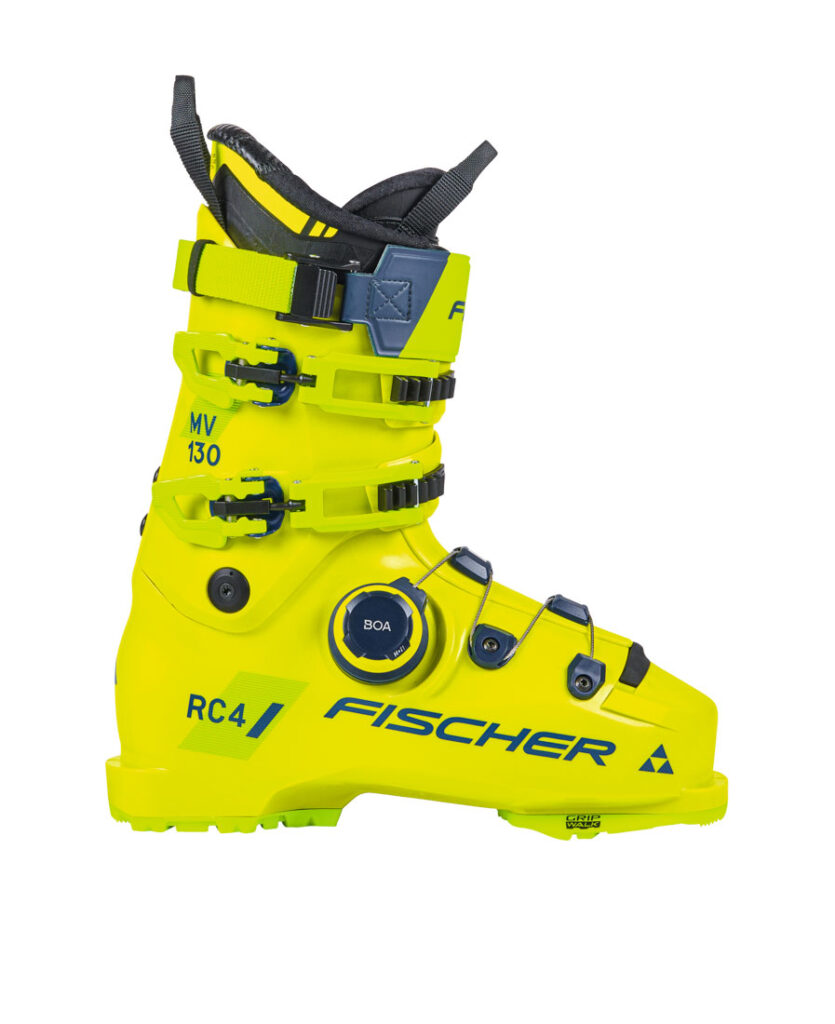
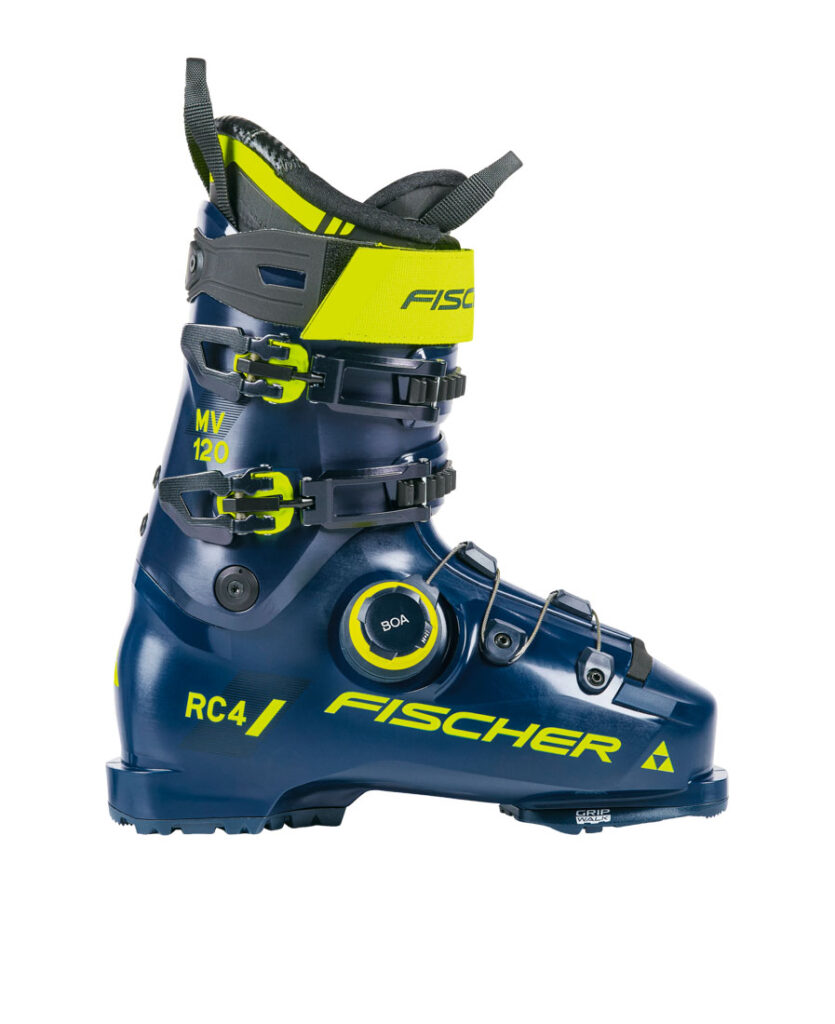
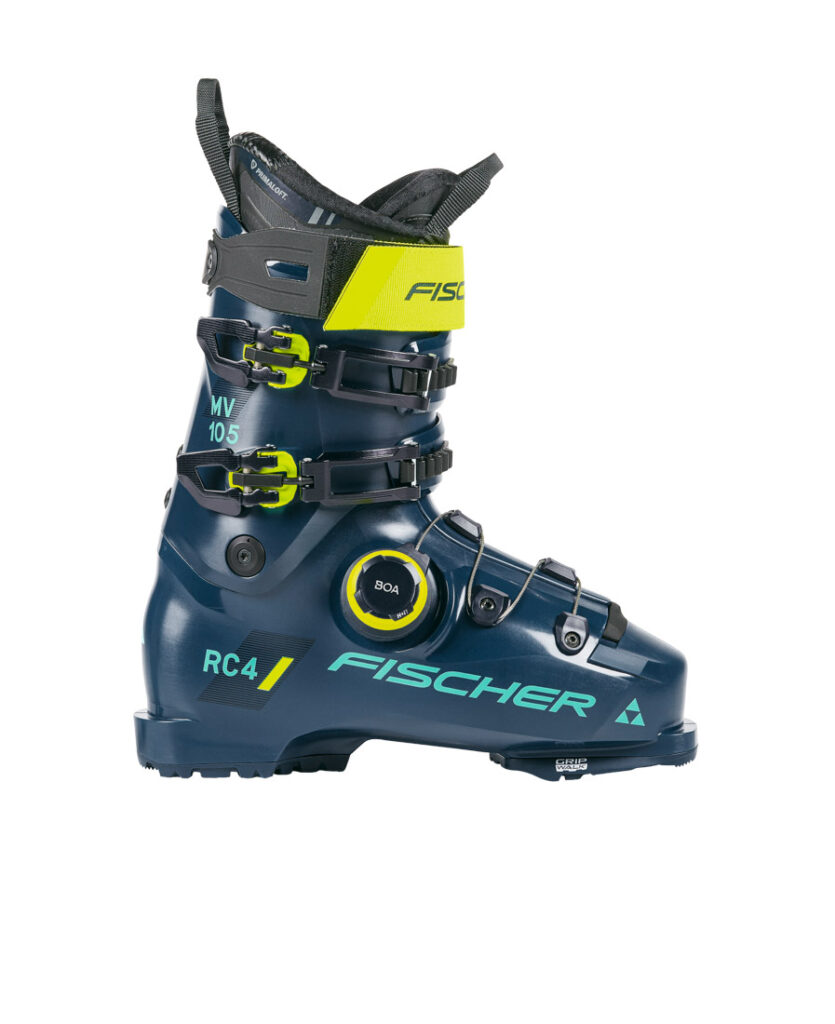
You’ve used BOA Fit systems on touring boots for years, so what’s different with the new BOA H+i1 system?
At the core of the RC4 MV (Mid Volume) project was the ambition to deliver a true high-performance boot with an excellent fit, to match the established performance of the Fischer alpine ski range (RC4, The Curv, Ranger, Nightsticks). We’ve a long-running partnership with BOA, with our successful Travers touring boot.
We were amazed by the power in the system and by how it was designed to be durable yet easy to replace
This led to Fischer being involved from the beginning of the BOA alpine project and, to be honest, we were sceptical; the dial is big, different, and more expensive than buckles. This was until we skied it (across many versions of prototypes with various components and shell concepts).
We were amazed by the power in the system and by how it was designed to be durable yet easy to replace.
The decision to start the Fischer RC4 performance boot development with the MV segment (100mm in size 26.5MP) was driven by the analysis of our foot scan data, sales figures, market evaluations and the acknowledgement that MV boots make up the largest segment of Performance boot sales.
The ‘RC4’ naming was not just a nod to the racing DNA that guided the development, but also a commitment to the high-performance message.
As skiers will discover this ski season, not all BOA-enabled boots are the same, and the pairing of the new RC4 MV concept with new BOA H+i1 system is unmatched in this last-width category, in terms of ski performance.
It’s been impressive to feel, first-hand, the difference this BOA system can make in an Alpine boot. Is BOA something you’re working on in other categories, like your Freeride and/or Race boots?
We’ve found proper integration of the BOA Fit system provides a huge boost to the skier’s in-boot experience and, at least in the case of the Fischer RC4 MV, it has successfully raised the ski performance. Not to mention the forefoot wrapping and instep pressure distribution are astonishing, while the handling is precise and intuitive.
In terms of seeing BOA in World Cup racing, currently I’m unsure, simply because elite racers are so tightly downsized in their boots, with so much custom fitting done (stretching and grinding), so the benefits of the BOA wrapping, and pressure distribution, are much less noticeable.
That being said, the Fischer Race R&D department are always tinkering and testing for the future.
Finally, what has this season held for you?
It’s been wild seeing the boot we’ve spent the last four years perfecting finally on store shelves. Hearing the distinctive BOA “rrrrt – rrrrt” sound at the top of the mountains always makes me smile. (Note for readers– when you tighten and loosen the BOA dial, this is the sound it makes.)